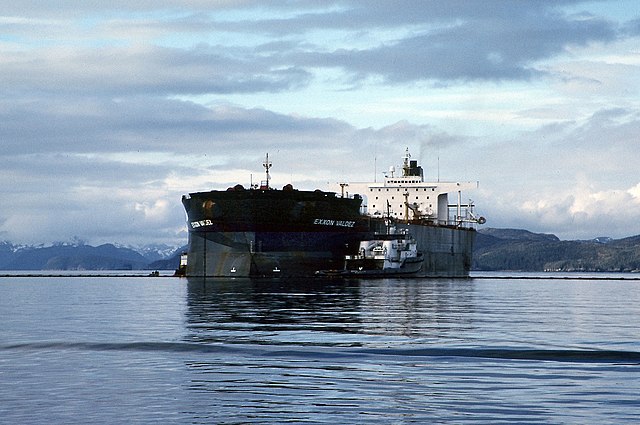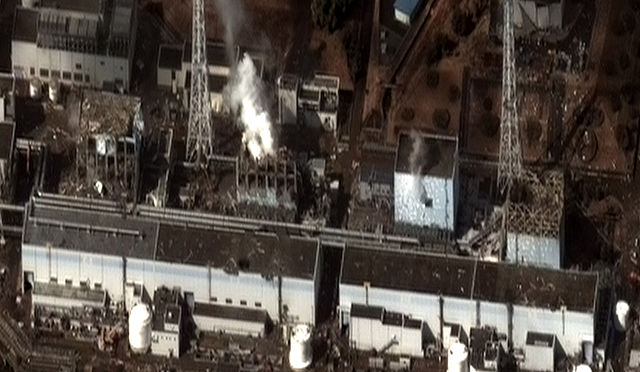The Exxon Valdez oil spill was a major environmental disaster that made worldwide headlines in the spring of 1989 and occurred in Alaska's Prince William Sound on March 24, 1989. The spill occurred when Exxon Valdez, an oil supertanker owned by Exxon Shipping Company, bound for Long Beach, California, struck Prince William Sound's Bligh Reef, 6 mi (9.7 km) west of Tatitlek, Alaska at 12:04 a.m. The tanker spilled approximately 10.8 million US gallons (260,000 bbl) of crude oil over the next few days.
U.S. Navy landing craft anchored ashore as numerous personnel position hoses during oil clean-up efforts on Smith Island on May 11, 1989
The Exxon Valdez a few hours after she ran aground.
During the first few days of the spill, heavy sheens of oil covered large areas of the surface of Prince William Sound.
Beginning three days after the vessel grounded, a storm pushed large quantities of fresh oil onto the rocky shores of many of the beaches in the Knight Island chain. In this photograph, pooled black oil is shown stranded in the rocks
An environmental disaster or ecological disaster is defined as a catastrophic event regarding the natural environment that is due to human activity. This point distinguishes environmental disasters from other disturbances such as natural disasters and intentional acts of war such as nuclear bombings.
Seabirds killed by the Exxon Valdez oil spill in Alaska's Prince William Sound. The spill in March 1989 dumped approximately 10.8 million US gallons of crude oil into the sound, killing over 250,000 seabirds, 2,800 sea otters, 300 harbor seals, 250 bald eagles, and numerous other wildlife. The Alaskan fishing industry also suffered tremendously as a result of the spill.
As of 2013, the Fukushima nuclear disaster site remains highly radioactive, with some 160,000 evacuees still living in temporary housing, and some land will be unfarmable for centuries. The difficult cleanup job will take 40 or more years, and cost tens of billions of dollars.
An aerial image of Nauru in 2002 from the U.S. Department of Energy's Atmospheric Radiation Measurement Program. Regenerated vegetation covers 63% of land that was mined







